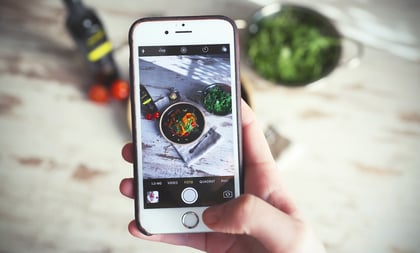Using Customer Data to Personalize Email Marketing Campaigns
Personalization of email marketing messages is crucial to win over today's savvy consumers . Personalization refers to u...
Read full articleInstagram might be all the rage, and Twitter might be an easy channel to quickly get your message out, but email remains the most effective way to generate customer engagement and increase your restaurant’s foot traffic. When sending an email to a segment of your customer base, you’re reaching targeted patrons who have opted-in to receive your messaging. They are already aware and ready to engage with your email.
At the same time, your email marketing can only be as good as the time and focus you put into your message. This includes the optimization of your email images.
Email marketing is the most important piece of executing a successful WiFi analytics and marketing strategy. Correctly optimizing your emails is paramount in gaining the attention and engagement of your subscribers. While it is obvious that your email subject line and body copy should be optimized and tested, many marketers overlook the optimization of their email images.
 Image relevance – You should always strive to make everything about your email consistent with the main message. If your email is promoting a new menu item, make sure to have an image of that item instead of a stock image of customers dining at a restaurant, or an unrelated food item. If possible, it is recommended to have a photographer take pictures of your actual establishment so that when the subscriber sees the image, they will recognize your brand and feel more comfortable engaging.
Image relevance – You should always strive to make everything about your email consistent with the main message. If your email is promoting a new menu item, make sure to have an image of that item instead of a stock image of customers dining at a restaurant, or an unrelated food item. If possible, it is recommended to have a photographer take pictures of your actual establishment so that when the subscriber sees the image, they will recognize your brand and feel more comfortable engaging.
Many readers will scan the email before deciding whether to spend the time reading it. The image will be the first thing that grabs the reader’s attention. Make sure it is not only relevant, but interesting as well.
Image format – There are several types of image formats that can be used in emails – JPEG, GIF, and PNG being the most popular. So which is best for your emails? Actually, they’re all appropriate for different reasons.
As a rule, choose whichever format is the best balance of color, quality and file size.
File size – According to our friends at Emma.com, you should choose the highest quality image and then pare it down by compressing the image and/or changing its format. With over 50% of emails now being opened on a mobile device, it is important to use images with a smaller file size. You never know who might be stuck on a 3G network, or when service is spotty. Compress your image to the point where the file size is smaller, but the quality remains high.
Retina images – On top of mobile devices requiring smaller image file sizes, the mobile onslaught has introduced another challenge for email marketers. More and more mobile devices are being manufactured with high-DPI screens. DPI stands for “dots per inch” and refers to the number of pixels a manufacturer can fit into an inch of screen. The higher the DPI, the more focused and clear the images will appear on the screen.
In the images below, the first image is non-retina display, while the second image is a retina display.


Images that are not optimized can appear blurry and pixelated on retina screens. As people have been familiarized with retina screens, they expect text and images to appear crisp and clear. Therefore, you should follow this best-practice advice from Litmus, while keeping in mind that the smaller the file size the better for mobile devices.
While email marketing isn’t the newest marketing strategy, the dynamic nature of today’s technology keeps best-practices shifting. This makes planning, managing, and optimizing your email campaigns very important. Don’t overlook the importance of properly optimized images.
Related Topics
Guides
Personalization of email marketing messages is crucial to win over today's savvy consumers . Personalization refers to u...
Read full articleWhen it comes to successful marketing in today’s brick-and-mortar environment, personalization is the key to unlocking a...
Read full articleCustomer segmentation and personalization of your marketing messages is crucial in today's competitive marketplace.
Read full articleNever miss a post! We'll keep you up-to-date on the latest restaurant and retail WiFi marketing information.

.svg)
We would love to hear from you! If you have any questions, comments or ideas about our blog, drop us a line and let us know.
Or call us at 727-877-8181.